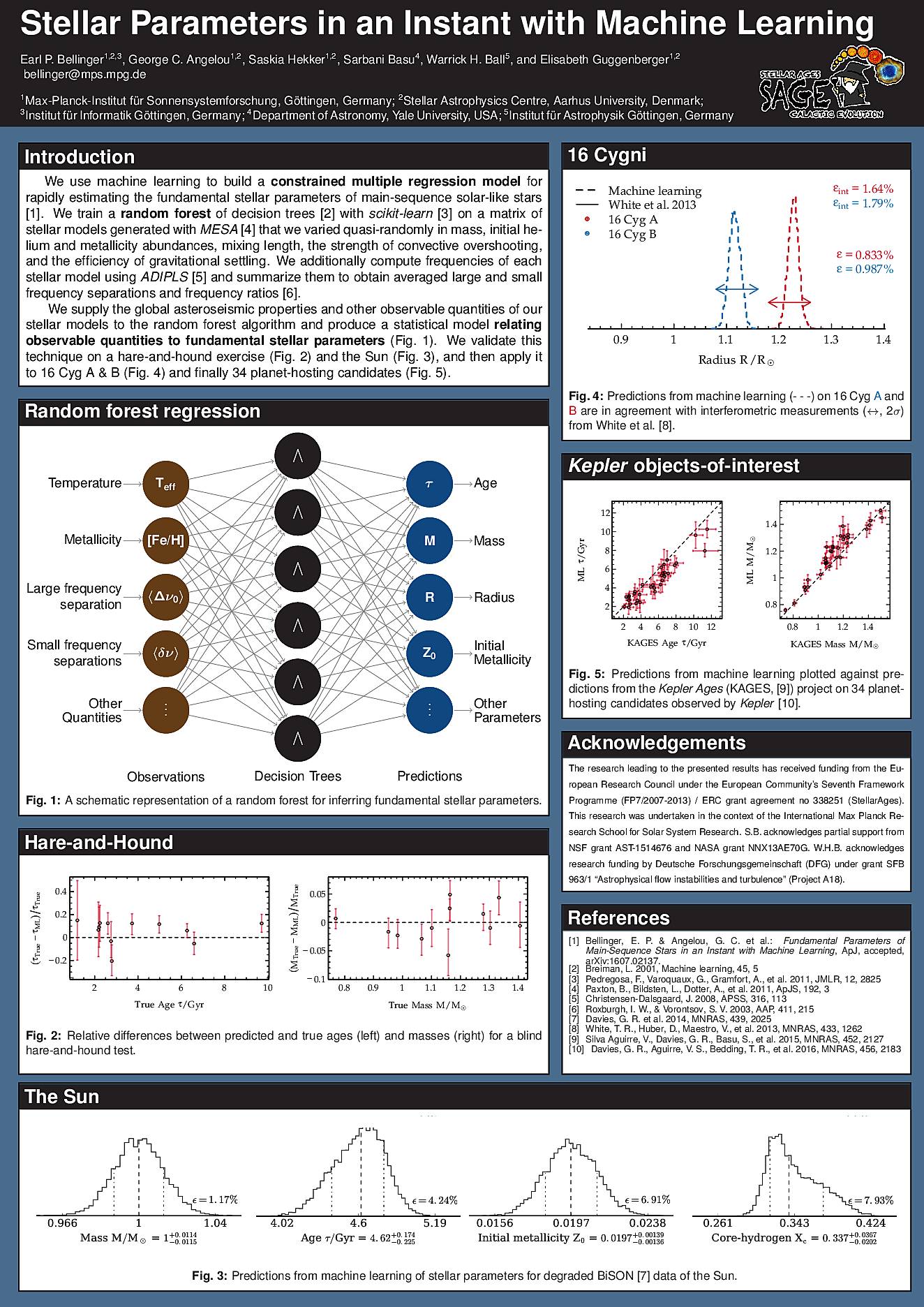Affiliation
Max-Planck-Institut fur Sonnensystemforschung, Gottingen, Germany
Main category
Natural Sciences (Astrophysics and Astrononmy)
Abstract
We use machine learning to build a constrained multiple regression model for rapidly estimating the fundamental stellar parameters of main-sequence solar-like stars (Bellinger & Angelou 2016). We train a random forest of decision trees with scikit-learn on a matrix of stellar models generated with MESA that we varied quasi-randomly in mass, initial helium and metallicity abundances, mixing length, the strength of convective overshooting, and the efficiency of gravitational settling. We additionally compute frequencies of each stellar model using ADIPLS and summarize them to obtain averaged large and small frequency separations and frequency ratios.
We supply the global asteroseismic properties and other observable quantities of our stellar models to the random forest algorithm and produce a statistical model relating observable quantities to fundamental stellar parameters. We validate this technique on a hare-and-hound exercise and the Sun, and then apply it to 16 Cyg A & B and finally 34 planet-hosting candidates.
Further reading
Bellinger, E. P. & Angelou, G. C. et al.: Fundamental Parameters of Main-Sequence Stars in an Instant with Machine Learning, ApJ, accepted, arXiv:1607.02137.
Do you have problems viewing the pdf-file? Download poster
here
If the poster contains inappropriate content, please
report the poster. You will be redirected to the landing page.
